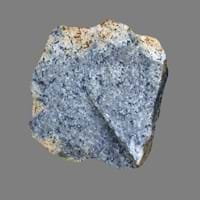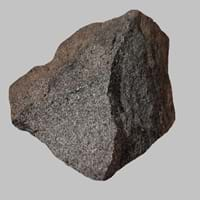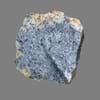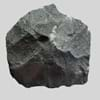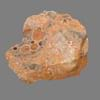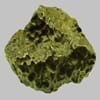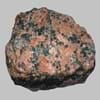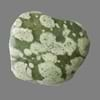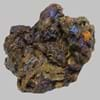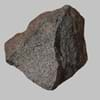Definition
Shonkinite is a rare, dark-coloured and intrusive igneous rock which contains augite and orthoclase feldspar as its primary constituents
Pyrolite is an igneous rock consisting of about three parts of peridotite and one part of basalt
Origin
USA
Pike County, U.S
Discoverer
Unknown
Unknown
Etymology
From the name of Shonkin Sag ranges in the Highwood Mountains of north-central Montana, US
From the chemical and mineralogical composition of the upper mantle of the Earth
Class
Igneous Rocks
Igneous Rocks
Sub-Class
Durable Rock, Medium Hardness Rock
Durable Rock, Medium Hardness Rock
Group
Not Applicable
Plutonic
Other Categories
Coarse Grained Rock, Fine Grained Rock, Medium Grained Rock, Opaque Rock
Coarse Grained Rock, Opaque Rock
Texture
Earthy
Phaneritic
Color
Brown, Buff, Cream, Green, Grey, Pink, White
Dark Greenish - Grey
Durability
Durable
Durable
Scratch Resistant
Yes
Yes
Appearance
Banded and Foilated
Rough and Shiny
Interior Uses
Decorative Aggregates, Flooring, Homes, Interior Decoration
Decorative Aggregates, Interior Decoration
Exterior Uses
As Building Stone, As Facing Stone, Garden Decoration, Paving Stone
As Building Stone, As Facing Stone, Garden Decoration, Paving Stone
Other Architectural Uses
Curbing
Curbing
Construction Industry
As Dimension Stone, Cement Manufacture, Construction Aggregate, for Road Aggregate, Landscaping, Making natural cement, Manufacture of Magnesium and Dolomite Refractories
As Dimension Stone, Cobblestones
Medical Industry
Not Available
Not Available
Antiquity Uses
Artifacts, Monuments, Sculpture
Artifacts, Monuments, Sculpture
Commercial Uses
Cemetery Markers, Creating Artwork
Creating Artwork, Gemstone, Jewelry, Source of Chromite, Platinum, Nickel and Garnet, Source of Diamonds
Types
Not Available
Dunite, Wehrlite, Harzburgite, Lherzolite
Features
Available in Lots of Colors and Patterns, Is one of the oldest rock, Matrix variable
Constitutes upper part of the Earth's mantle, Generally rough to touch, Is one of the oldest rock
Archaeological Significance
Famous Monuments
Not Available
Not Available
Famous Sculptures
Not Available
Not Available
Formation
Shonkinites are formed due to alkaline igneous activities and are generally formed in thick continental crustal areas or in Cordilleran subduction zones.
Pyrolite is a fine-grained, hard rock which is a type of metasomatite, essentially altered basalt. It forms with or without crystallization, either below the surface as intrusive rocks or on the surface as extrusive rocks.
Mineral Content
Amphibole, Biotite, Feldspar, Hornblade, Micas, Muscovite or Illite, Plagioclase, Pyroxene, Quartz
Amphibole, Chromite, Garnet, Magnesium, Olivine, Phlogopite, Plagioclase, Pyroxene
Compound Content
Aluminium Oxide, CaO, Iron(III) Oxide, FeO, Potassium Oxide, MgO, MnO, Sodium Oxide, Phosphorus Pentoxide, Silicon Dioxide, Titanium Dioxide
Ca, Fe, Mg, Potassium, Silicon Dioxide, Sodium, Titanium Dioxide
Types of Metamorphism
Burial Metamorphism, Cataclastic Metamorphism, Contact Metamorphism, Hydrothermal Metamorphism, Impact Metamorphism, Regional Metamorphism
Burial Metamorphism, Cataclastic Metamorphism, Contact Metamorphism, Hydrothermal Metamorphism, Impact Metamorphism, Regional Metamorphism
Types of Weathering
Biological Weathering, Chemical Weathering, Mechanical Weathering
Biological Weathering, Chemical Weathering, Mechanical Weathering
Types of Erosion
Chemical Erosion, Coastal Erosion, Sea Erosion, Water Erosion
Chemical Erosion, Coastal Erosion, Glacier Erosion, Sea Erosion, Water Erosion, Wind Erosion
Grain Size
Medium to Fine Coarse Grained
Coarse Grained
Fracture
Not Available
Irregular
Porosity
Less Porous
Less Porous
Luster
Subvitreous to Dull
Shiny
Cleavage
Perfect
Not Available
Toughness
Not Available
2.1
Specific Gravity
2.6-2.7
3-3.01
Transparency
Opaque
Translucent to Opaque
Density
2.6-2.8 g/cm3
3.1-3.4 g/cm3
Resistance
Heat Resistant, Impact Resistant, Wear Resistant
Heat Resistant, Pressure Resistant, Wear Resistant
Deposits in Eastern Continents
Asia
China, India, Iran, Saudi Arabia, Sri Lanka, Taiwan, Thailand, Turkey, Vietnam
China, India, Indonesia, Kazakhstan, Russia, South Korea, Thailand, Turkey
Africa
Angola, Egypt, Madagascar, Namibia, Nigeria, South Africa
Morocco, South Africa
Europe
Bulgaria, England, Germany, Norway, Romania, Switzerland
Finland, France, Georgia, Germany, Great Britain, Italy, Kazakhstan, Netherlands, Norway, Spain, Switzerland
Others
Not Available
Not Available
Deposits in Western Continents
North America
USA
Canada, USA
South America
Brazil, Chile
Brazil
Deposits in Oceania Continent
Australia
New Zealand, Queensland, South Australia, Western Australia
New Zealand, Western Australia
